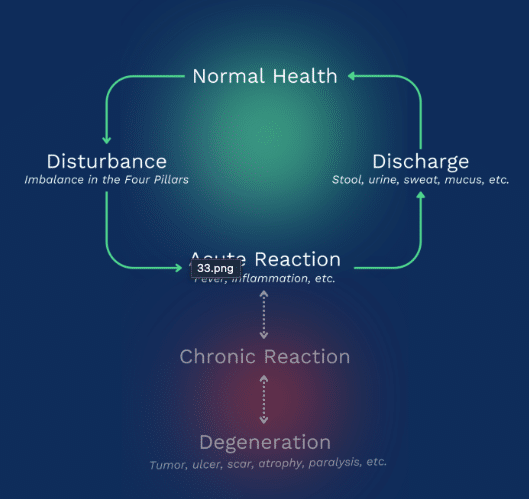It all began at 2:00 AM on a Monday morning.
A small, ominous grumble stirred me awake—and trust me, I’ve felt that sensation before. If you’ve ever experienced true, raw food poisoning, you already know what I mean. Your body isn’t just whispering at you—it’s screaming.
My mind raced as I mentally retraced my culinary steps from the past 12 hours. Then it hit me: the culprit was obvious. It was that meat from my favorite organic, fast-casual spot, Upbeet. I should have known. It had been sitting out too long, and although I questioned it at the time, I made the classic “eh, it’ll be fine” decision. Spoiler: it was not fine.
The Body Speaks Loudly (And Violently)
What followed wasn’t pretty. First came the dry heaving—violent, involuntary, and exhausting. Then came the eruption. We’re talking full-body expulsion, painting the back and side of the toilet. (Sorry, but real healing stories don’t skip the details.)
I crawled back to bed, shaky but relieved. Maybe that was it?
Nope.
Cue round two. And three. Toilet, vomit, bed, repeat. The next 48 hours were nothing short of misery.
But—and this is the point of this blog post—I bounced back much faster than I used to. And that recovery didn’t come from suppressing symptoms or popping over-the-counter meds. It came from understanding what acute illness is really doing in the body—and how to support it rather than fight it.
Acute Illness Isn’t the Enemy
One of the most foundational things I’ve learned (and that I now teach) is this: acute illness is the body’s natural release valve. It’s how your system screams “too much!” when it’s overloaded with toxins.
Dr. Zeff, one of our mentors, beautifully illustrates this concept in his healing model. When one of the body’s four pillars of healing is disturbed—be it digestion, detox, structural integrity, or the nervous system—your body doesn’t just politely send a memo. It reacts, often violently, to clear the overload.

Vomiting, diarrhea, coughing, mucus, rashes—these are not “problems” to fix. They are the process of healing in action.
When we suppress those symptoms with meds, we interfere with that natural, intelligent design. Instead of letting toxins out, we drive them deeper, which can pave the way for chronic health issues down the line.
So how do we support the body through an acute episode—like food poisoning—without getting in its way?
Let me show you what I did.
The Healing Protocol: A 5-Step Strategy
Here’s what got me through those miserable hours—and back to functioning in record time.
1. Fast
This one’s simple: don’t eat. Your body is trying to eliminate, not digest. The last thing it needs is new material to process.
For 72 hours, I stuck to bone broth, orange juice, and a small amount of fruit. That was it. Letting my GI system rest gave my body more bandwidth to do its job: purge, reset, and heal.
Fasting during an acute illness—especially a GI issue—isn’t just effective, it’s foundational.
2. Enemas
Enemas might seem old-school or intimidating, but hear me out: they’re one of the most powerful detox tools you have.
Every morning for three days, I did an enema. And what came out… well, let’s just say it didn’t smell like grandma’s kitchen.
Enemas help clear toxins from the lower digestive tract and stimulate bile release—both crucial for detoxification. If you’re not using enemas during acute illness, you’re missing a major opportunity to accelerate recovery.
3. Binders
Once toxins are on the move, you need a way to escort them out—and that’s where binders come in.
I used Ultra Binder from Quicksilver Scientific, which is one of my go-to tools. Binders attach to toxins and help eliminate them via stool. Think of them as the clean-up crew after a house party.
4. Homeopathy
This step is non-negotiable for me. Homeopathy works with your body’s healing mechanisms, not against them.
Here are a few of my favorite remedies for food poisoning (all adapted from The Homeopathic Emergency Guide by Dr. Thomas Kruzel):
- Ars Alb: Your first go-to. For vomiting, diarrhea, anxiety, and restlessness—especially after midnight.
- China: For intense bloating, watery stools, and fatigue.
- Ipecac: For relentless nausea and vomiting
- Sulphur: Especially if diarrhea hits at 5 AM.
- Veratrum Alb: For simultaneous vomiting and diarrhea with chills and cold sweats.
- Colocynthis: When stomach cramping makes you double over.
- Phosphorus: For faucet-like diarrhea with weakness and heat flashes.
Other honorable mentions: Podophyllum, Croton Tig, Nux Vomica, and Aloe.
5. Dysbiosis Cleanup
After the acute storm passes, the real work begins: clearing any microbial stragglers. This phase lasts 3–4 weeks for me.
Here’s what I’m using:
- Dysbiocide – Great for smaller parasites and post-infection cleanup.
- FC Cidal – Targets stubborn yeast and bacteria.
- ADP (emulsified oregano) – Potent antimicrobial, antifungal, and antiparasitic.
- Turpentine – A powerful, pine-derived oil (only purchase high-quality U.S.-sourced versions to avoid contamination).
Every Symptom Is a Signal
Here’s the truth: your body is always on your side.
Even when it’s vomiting at 2:00 AM. Even when you’re curled up in bed with the sweats and chills. These are not glitches. They’re intelligent responses, designed to protect and reset you.
Suppressing symptoms might give temporary relief—but it doesn’t lead to true healing. Supporting your body with the right tools, mindset, and rhythm? That’s where the magic happens.

Leave a Reply
You must be logged in to post a comment.